作者: peghoty
出处: http://blog.csdn.net/itplus/article/details/38926837
欢迎转载/分享, 但请务必声明文章出处.
最后,附上作者在补充材料里提供的 Matlab 示例程序 (加了适当的代码注释)。
- clear all
- close all
- disp('The only input needed is a distance matrix file')
- disp('The format of this file should be: ')
- disp('Column 1: id of element i')
- disp('Column 2: id of element j')
- disp('Column 3: dist(i,j)')
- %% 从文件中读取数据
- mdist=input('name of the distance matrix file (with single quotes)?\n');
- disp('Reading input distance matrix')
- xx=load(mdist);
- ND=max(xx(:,2));
- NL=max(xx(:,1));
- if (NL>ND)
- ND=NL; %% 确保 DN 取为第一二列最大值中的较大者,并将其作为数据点总数
- end
- N=size(xx,1); %% xx 第一个维度的长度,相当于文件的行数(即距离的总个数)
- %% 初始化为零
- for i=1:ND
- for j=1:ND
- dist(i,j)=0;
- end
- end
- %% 利用 xx 为 dist 数组赋值,注意输入只存了 0.5*DN(DN-1) 个值,这里将其补成了满矩阵
- %% 这里不考虑对角线元素
- for i=1:N
- ii=xx(i,1);
- jj=xx(i,2);
- dist(ii,jj)=xx(i,3);
- dist(jj,ii)=xx(i,3);
- end
- %% 确定 dc
- percent=2.0;
- fprintf('average percentage of neighbours (hard coded): %5.6f\n', percent);
- position=round(N*percent/100); %% round 是一个四舍五入函数
- sda=sort(xx(:,3)); %% 对所有距离值作升序排列
- dc=sda(position);
- %% 计算局部密度 rho (利用 Gaussian 核)
- fprintf('Computing Rho with gaussian kernel of radius: %12.6f\n', dc);
- %% 将每个数据点的 rho 值初始化为零
- for i=1:ND
- rho(i)=0.;
- end
- % Gaussian kernel
- for i=1:ND-1
- for j=i+1:ND
- rho(i)=rho(i)+exp(-(dist(i,j)/dc)*(dist(i,j)/dc));
- rho(j)=rho(j)+exp(-(dist(i,j)/dc)*(dist(i,j)/dc));
- end
- end
- % "Cut off" kernel
- %for i=1:ND-1
- % for j=i+1:ND
- % if (dist(i,j)<dc)
- % rho(i)=rho(i)+1.;
- % rho(j)=rho(j)+1.;
- % end
- % end
- %end
- %% 先求矩阵列最大值,再求最大值,最后得到所有距离值中的最大值
- maxd=max(max(dist));
- %% 将 rho 按降序排列,ordrho 保持序
- [rho_sorted,ordrho]=sort(rho,'descend');
- %% 处理 rho 值最大的数据点
- delta(ordrho(1))=-1.;
- nneigh(ordrho(1))=0;
- %% 生成 delta 和 nneigh 数组
- for ii=2:ND
- delta(ordrho(ii))=maxd;
- for jj=1:ii-1
- if(dist(ordrho(ii),ordrho(jj))<delta(ordrho(ii)))
- delta(ordrho(ii))=dist(ordrho(ii),ordrho(jj));
- nneigh(ordrho(ii))=ordrho(jj);
- %% 记录 rho 值更大的数据点中与 ordrho(ii) 距离最近的点的编号 ordrho(jj)
- end
- end
- end
- %% 生成 rho 值最大数据点的 delta 值
- delta(ordrho(1))=max(delta(:));
- %% 决策图
- disp('Generated file:DECISION GRAPH')
- disp('column 1:Density')
- disp('column 2:Delta')
- fid = fopen('DECISION_GRAPH', 'w');
- for i=1:ND
- fprintf(fid, '%6.2f %6.2f\n', rho(i),delta(i));
- end
- %% 选择一个围住类中心的矩形
- disp('Select a rectangle enclosing cluster centers')
- %% 每台计算机,句柄的根对象只有一个,就是屏幕,它的句柄总是 0
- %% >> scrsz = get(0,'ScreenSize')
- %% scrsz =
- %% 1 1 1280 800
- %% 1280 和 800 就是你设置的计算机的分辨率,scrsz(4) 就是 800,scrsz(3) 就是 1280
- scrsz = get(0,'ScreenSize');
- %% 人为指定一个位置,感觉就没有那么 auto 了 :-)
- figure('Position',[6 72 scrsz(3)/4. scrsz(4)/1.3]);
- %% ind 和 gamma 在后面并没有用到
- for i=1:ND
- ind(i)=i;
- gamma(i)=rho(i)*delta(i);
- end
- %% 利用 rho 和 delta 画出一个所谓的“决策图”
- subplot(2,1,1)
- tt=plot(rho(:),delta(:),'o','MarkerSize',5,'MarkerFaceColor','k','MarkerEdgeColor','k');
- title ('Decision Graph','FontSize',15.0)
- xlabel ('\rho')
- ylabel ('\delta')
- subplot(2,1,1)
- rect = getrect(1);
- %% getrect 从图中用鼠标截取一个矩形区域, rect 中存放的是
- %% 矩形左下角的坐标 (x,y) 以及所截矩形的宽度和高度
- rhomin=rect(1);
- deltamin=rect(2); %% 作者承认这是个 error,已由 4 改为 2 了!
- %% 初始化 cluster 个数
- NCLUST=0;
- %% cl 为归属标志数组,cl(i)=j 表示第 i 号数据点归属于第 j 个 cluster
- %% 先统一将 cl 初始化为 -1
- for i=1:ND
- cl(i)=-1;
- end
- %% 在矩形区域内统计数据点(即聚类中心)的个数
- for i=1:ND
- if ( (rho(i)>rhomin) && (delta(i)>deltamin))
- NCLUST=NCLUST+1;
- cl(i)=NCLUST; %% 第 i 号数据点属于第 NCLUST 个 cluster
- icl(NCLUST)=i;%% 逆映射,第 NCLUST 个 cluster 的中心为第 i 号数据点
- end
- end
- fprintf('NUMBER OF CLUSTERS: %i \n', NCLUST);
- disp('Performing assignation')
- %% 将其他数据点归类 (assignation)
- for i=1:ND
- if (cl(ordrho(i))==-1)
- cl(ordrho(i))=cl(nneigh(ordrho(i)));
- end
- end
- %% 由于是按照 rho 值从大到小的顺序遍历,循环结束后, cl 应该都变成正的值了.
- %% 处理光晕点,halo这段代码应该移到 if (NCLUST>1) 内去比较好吧
- for i=1:ND
- halo(i)=cl(i);
- end
- if (NCLUST>1)
- % 初始化数组 bord_rho 为 0,每个 cluster 定义一个 bord_rho 值
- for i=1:NCLUST
- bord_rho(i)=0.;
- end
- % 获取每一个 cluster 中平均密度的一个界 bord_rho
- for i=1:ND-1
- for j=i+1:ND
- %% 距离足够小但不属于同一个 cluster 的 i 和 j
- if ((cl(i)~=cl(j))&& (dist(i,j)<=dc))
- rho_aver=(rho(i)+rho(j))/2.; %% 取 i,j 两点的平均局部密度
- if (rho_aver>bord_rho(cl(i)))
- bord_rho(cl(i))=rho_aver;
- end
- if (rho_aver>bord_rho(cl(j)))
- bord_rho(cl(j))=rho_aver;
- end
- end
- end
- end
- %% halo 值为 0 表示为 outlier
- for i=1:ND
- if (rho(i)<bord_rho(cl(i)))
- halo(i)=0;
- end
- end
- end
- %% 逐一处理每个 cluster
- for i=1:NCLUST
- nc=0; %% 用于累计当前 cluster 中数据点的个数
- nh=0; %% 用于累计当前 cluster 中核心数据点的个数
- for j=1:ND
- if (cl(j)==i)
- nc=nc+1;
- end
- if (halo(j)==i)
- nh=nh+1;
- end
- end
- fprintf('CLUSTER: %i CENTER: %i ELEMENTS: %i CORE: %i HALO: %i \n', i,icl(i),nc,nh,nc-nh);
- end
- cmap=colormap;
- for i=1:NCLUST
- ic=int8((i*64.)/(NCLUST*1.));
- subplot(2,1,1)
- hold on
- plot(rho(icl(i)),delta(icl(i)),'o','MarkerSize',8,'MarkerFaceColor',cmap(ic,:),'MarkerEdgeColor',cmap(ic,:));
- end
- subplot(2,1,2)
- disp('Performing 2D nonclassical multidimensional scaling')
- Y1 = mdscale(dist, 2, 'criterion','metricstress');
- plot(Y1(:,1),Y1(:,2),'o','MarkerSize',2,'MarkerFaceColor','k','MarkerEdgeColor','k');
- title ('2D Nonclassical multidimensional scaling','FontSize',15.0)
- xlabel ('X')
- ylabel ('Y')
- for i=1:ND
- A(i,1)=0.;
- A(i,2)=0.;
- end
- for i=1:NCLUST
- nn=0;
- ic=int8((i*64.)/(NCLUST*1.));
- for j=1:ND
- if (halo(j)==i)
- nn=nn+1;
- A(nn,1)=Y1(j,1);
- A(nn,2)=Y1(j,2);
- end
- end
- hold on
- plot(A(1:nn,1),A(1:nn,2),'o','MarkerSize',2,'MarkerFaceColor',cmap(ic,:),'MarkerEdgeColor',cmap(ic,:));
- end
- %for i=1:ND
- % if (halo(i)>0)
- % ic=int8((halo(i)*64.)/(NCLUST*1.));
- % hold on
- % plot(Y1(i,1),Y1(i,2),'o','MarkerSize',2,'MarkerFaceColor',cmap(ic,:),'MarkerEdgeColor',cmap(ic,:));
- % end
- %end
- faa = fopen('CLUSTER_ASSIGNATION', 'w');
- disp('Generated file:CLUSTER_ASSIGNATION')
- disp('column 1:element id')
- disp('column 2:cluster assignation without halo control')
- disp('column 3:cluster assignation with halo control')
- for i=1:ND
- fprintf(faa, '%i %i %i\n',i,cl(i),halo(i));
- end
本系列聚类算法的其他链接:
第一章 引言
第二章 预备知识
第三章 直接聚类法
第四章 K-means
第五章 DBSCAN
第六章 OPTICS
第七章 聚类分析的效果评测
第八章 数据尺度化问题










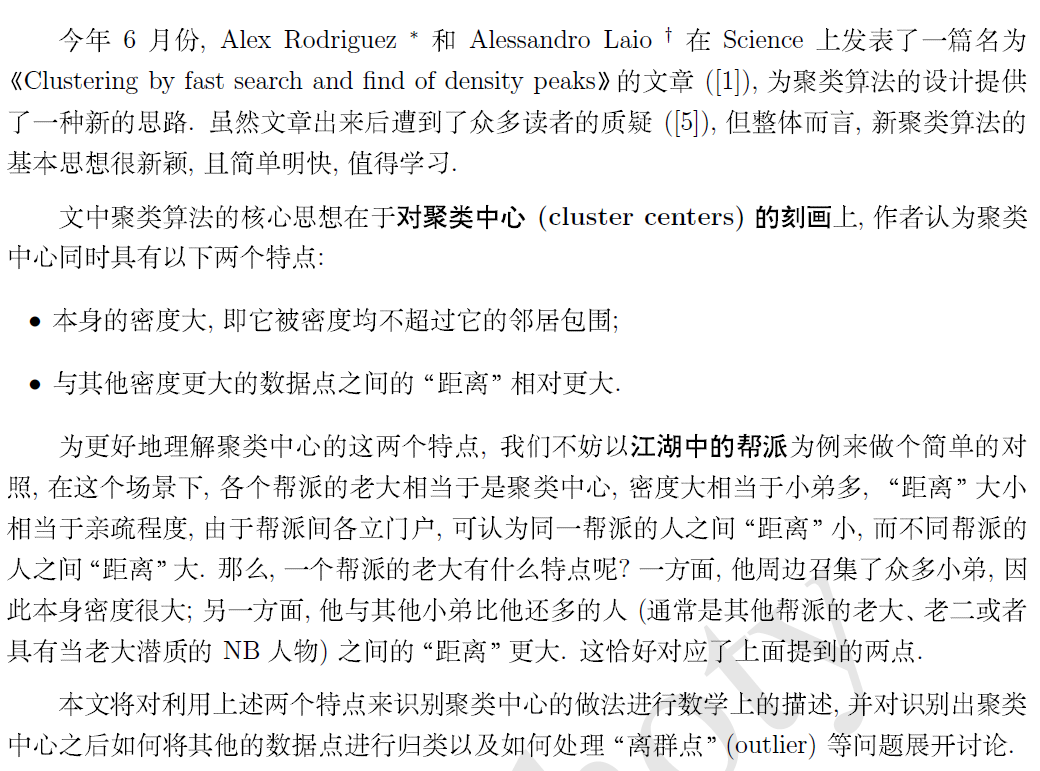

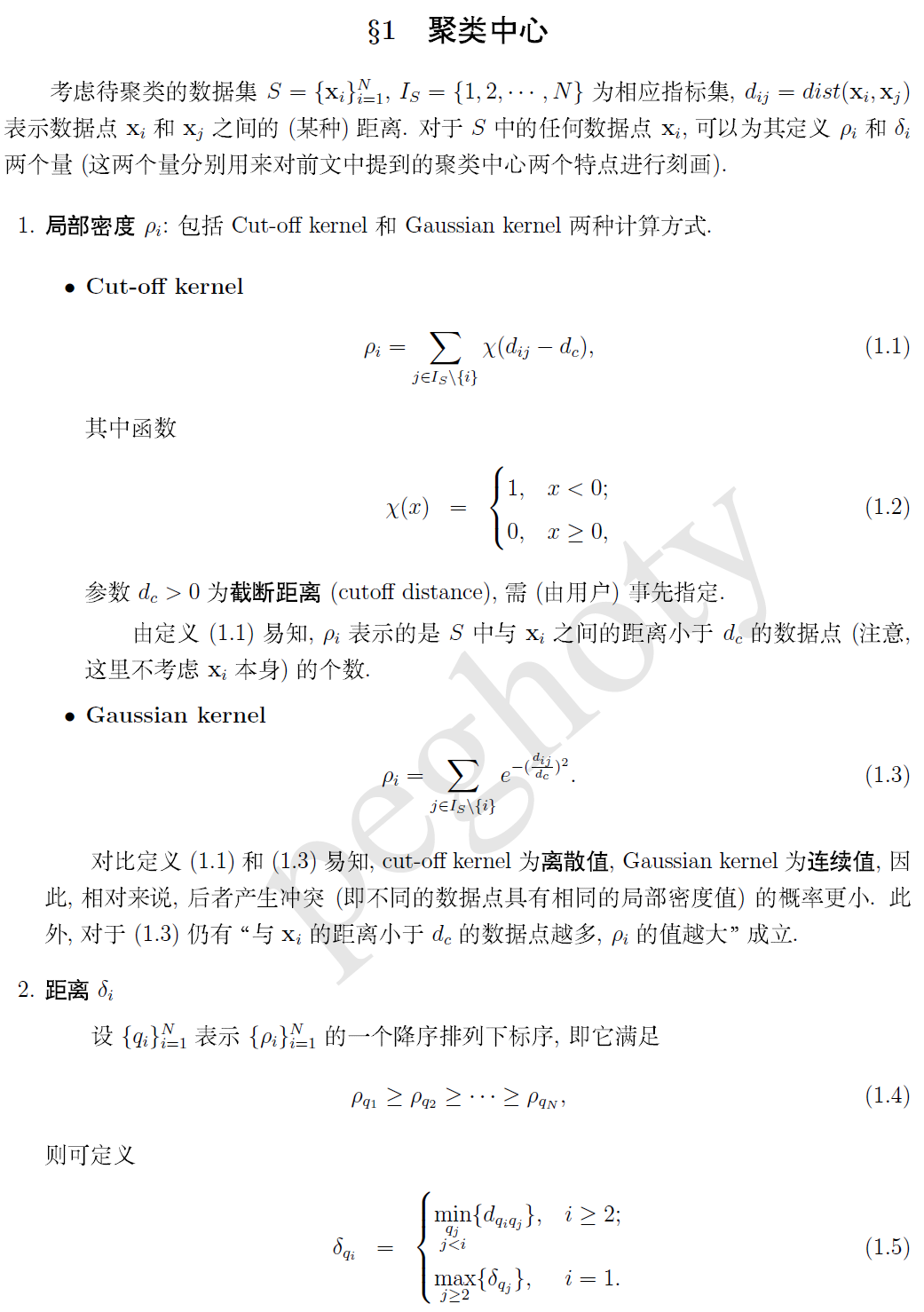
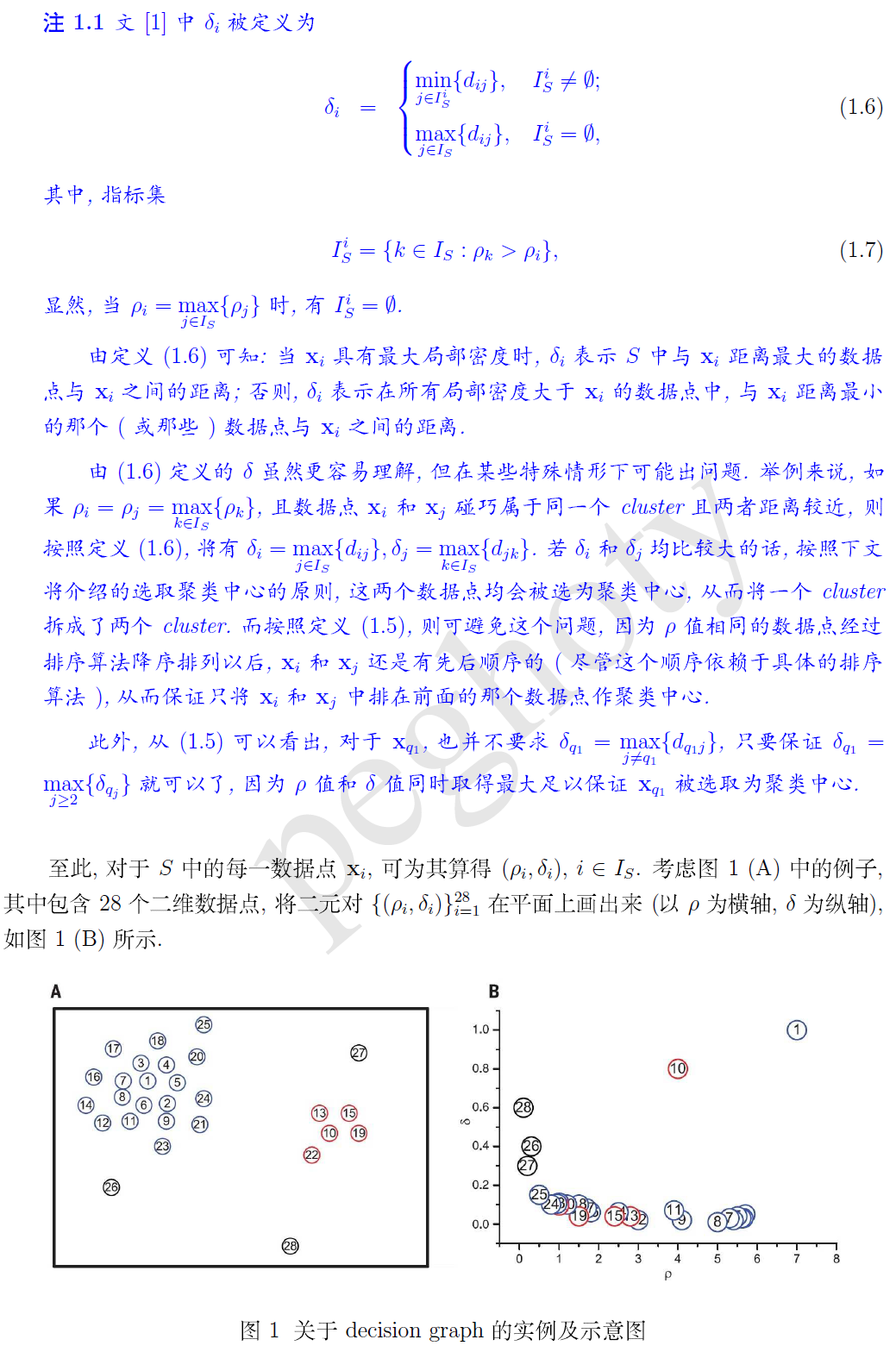

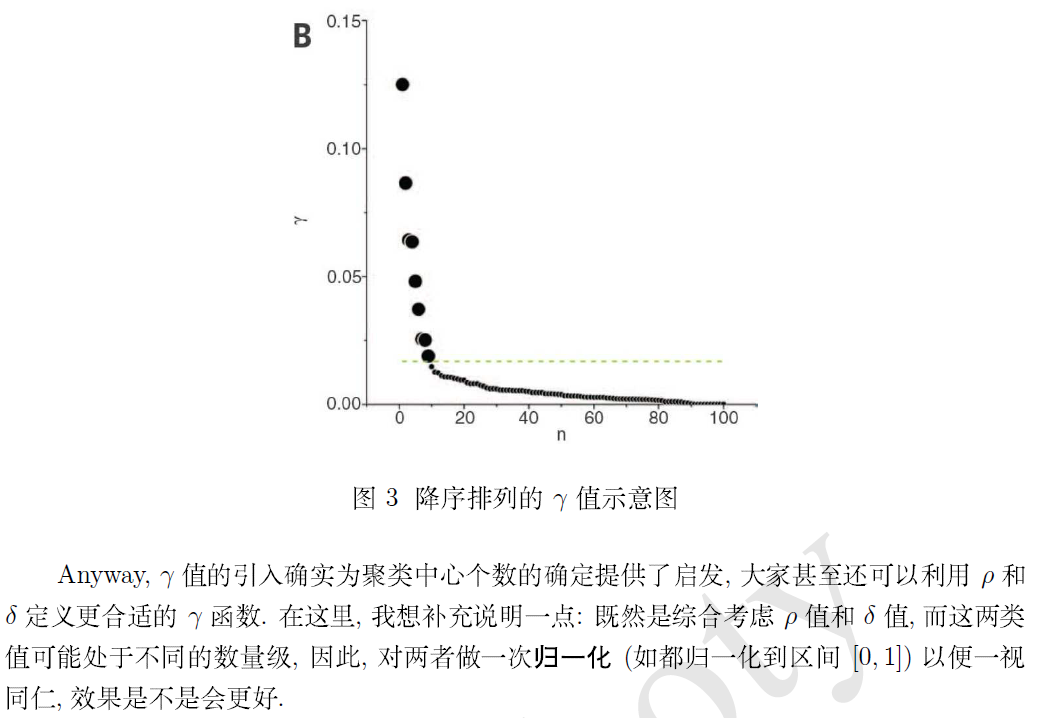
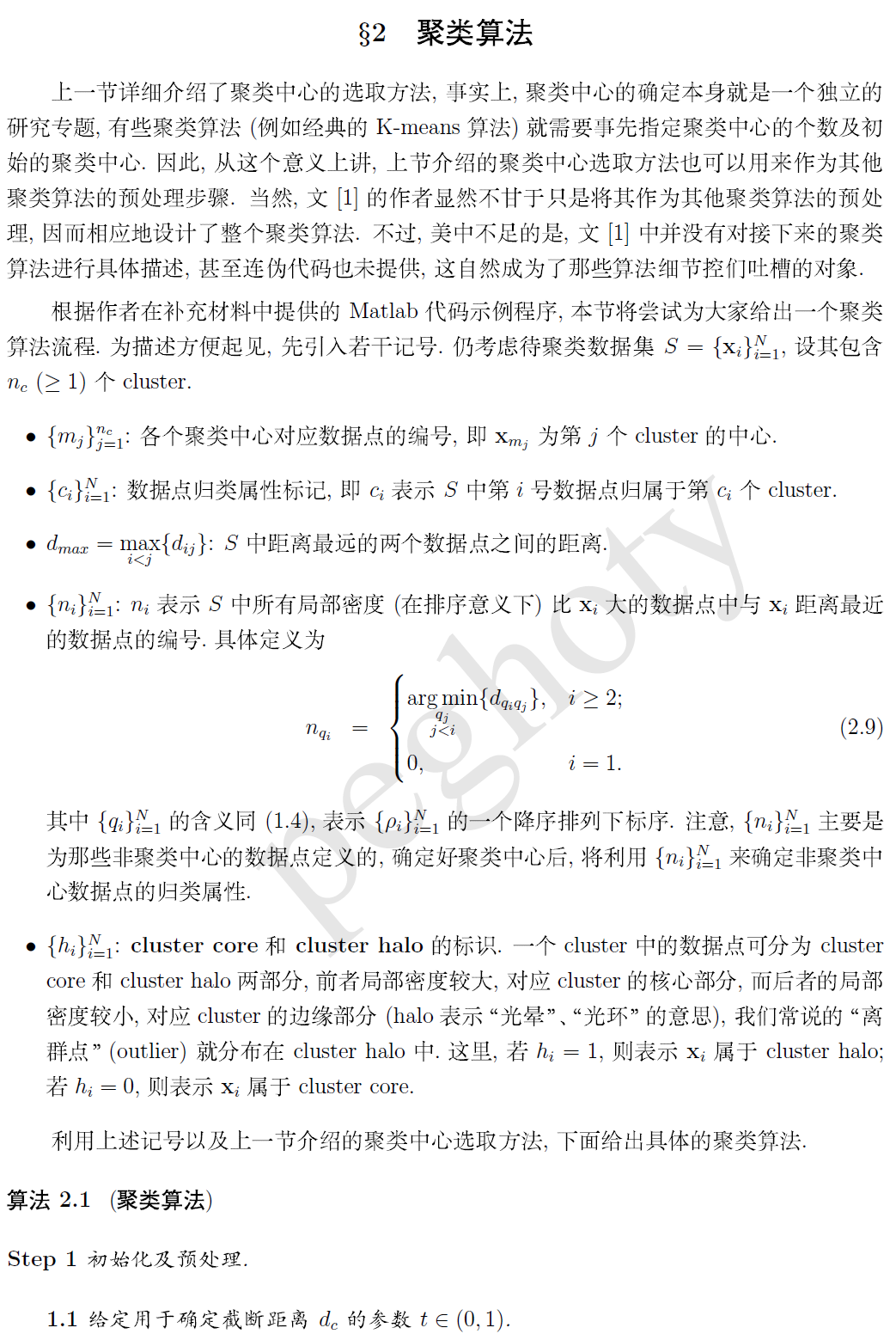
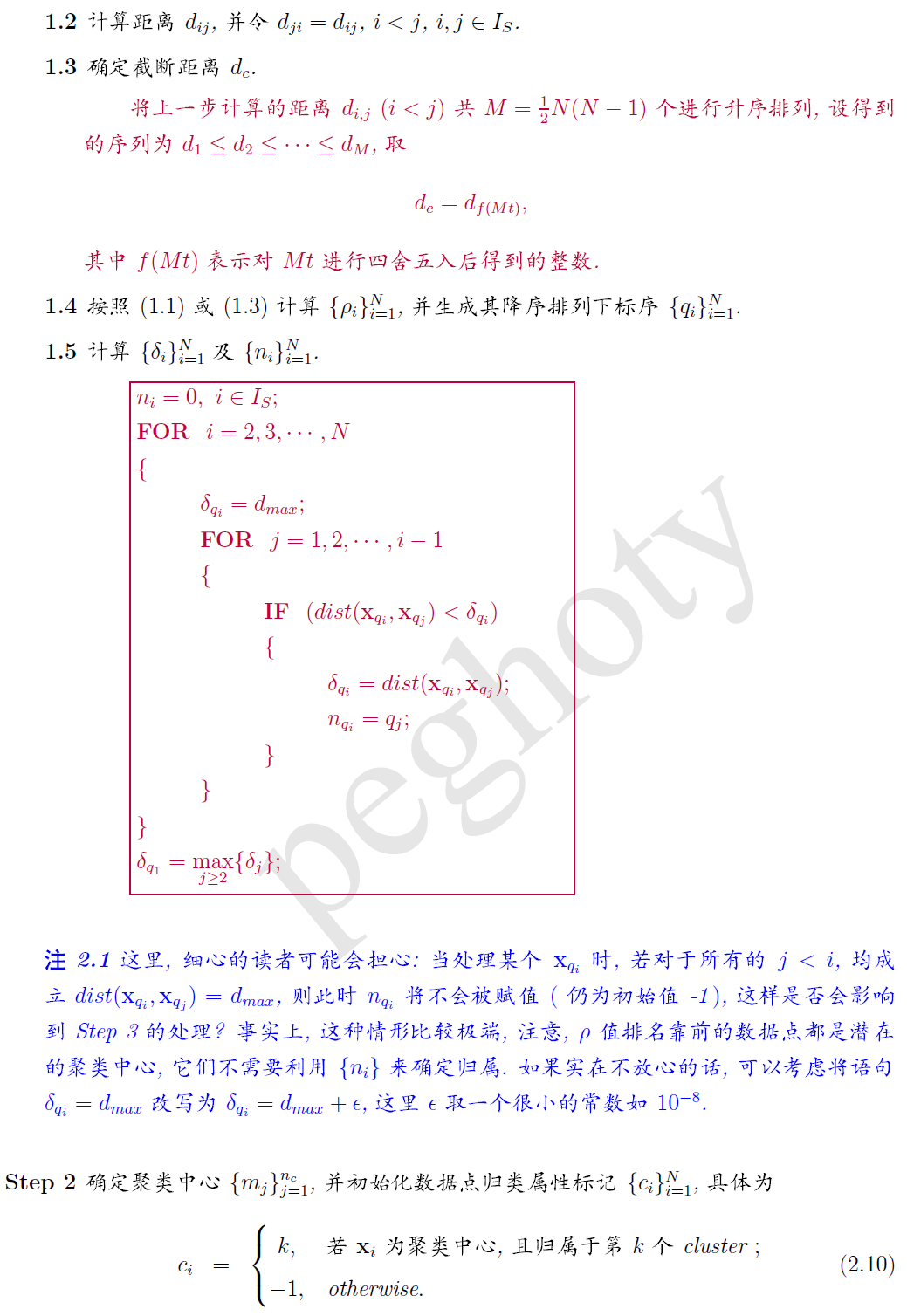
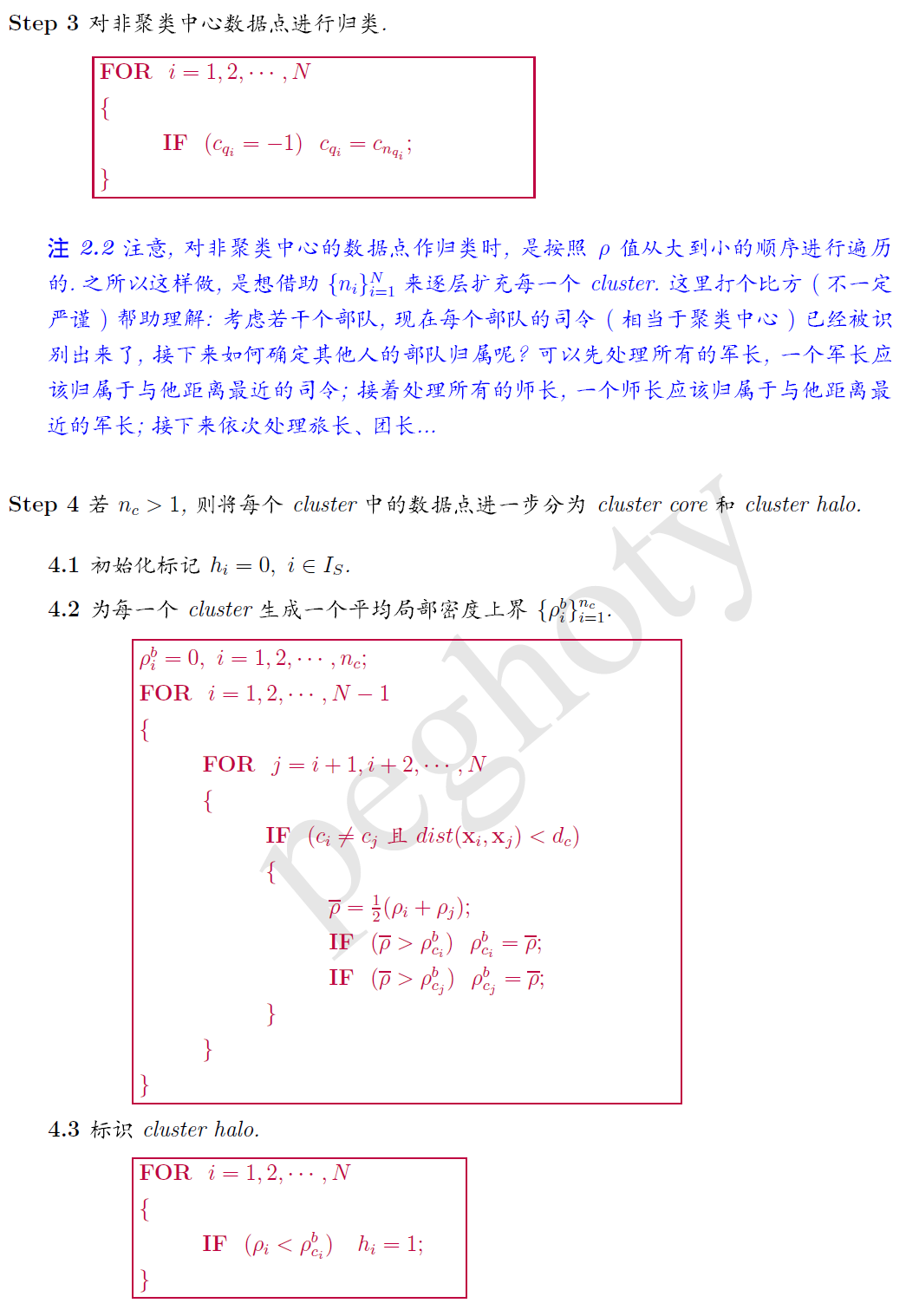

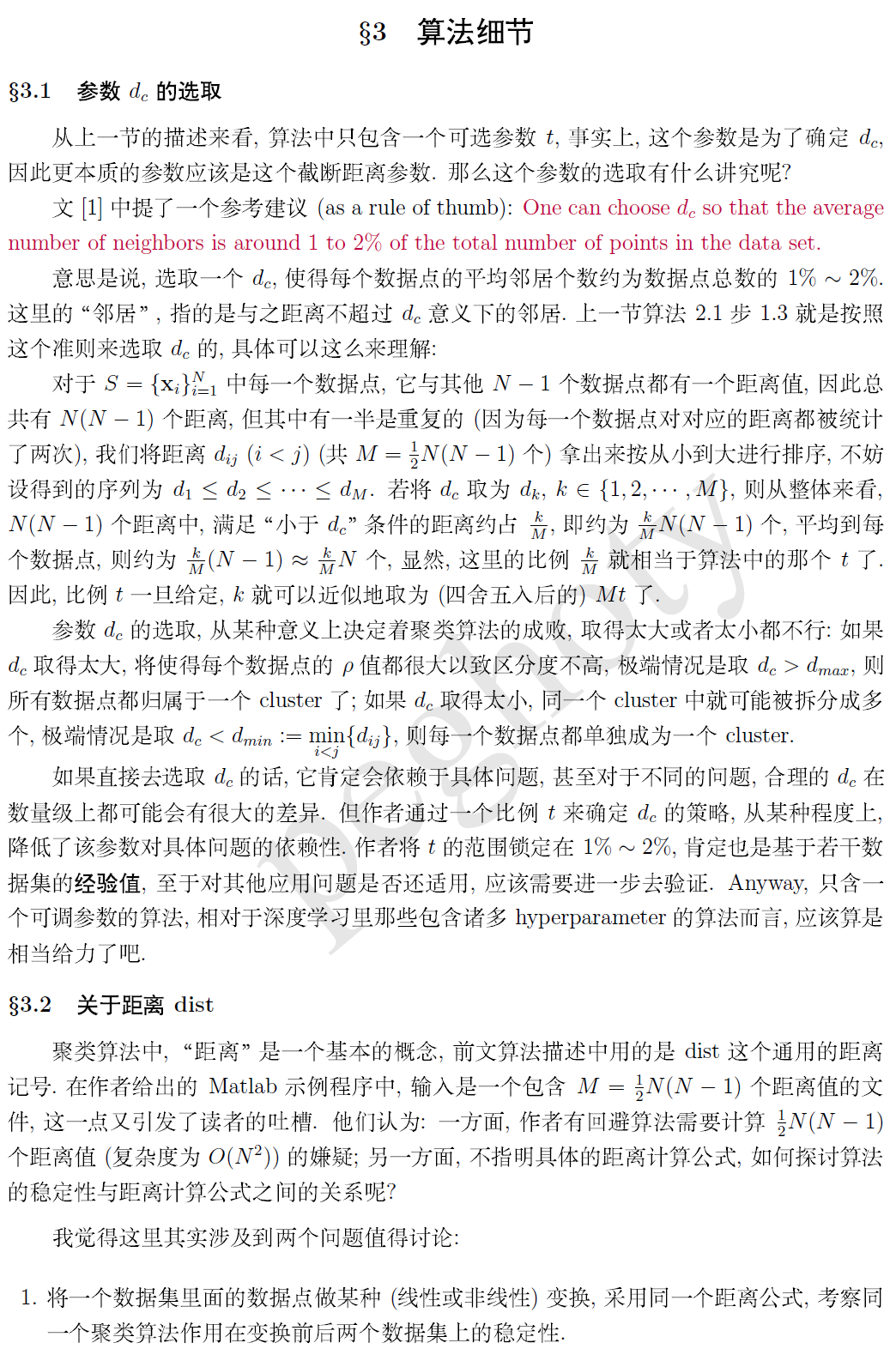
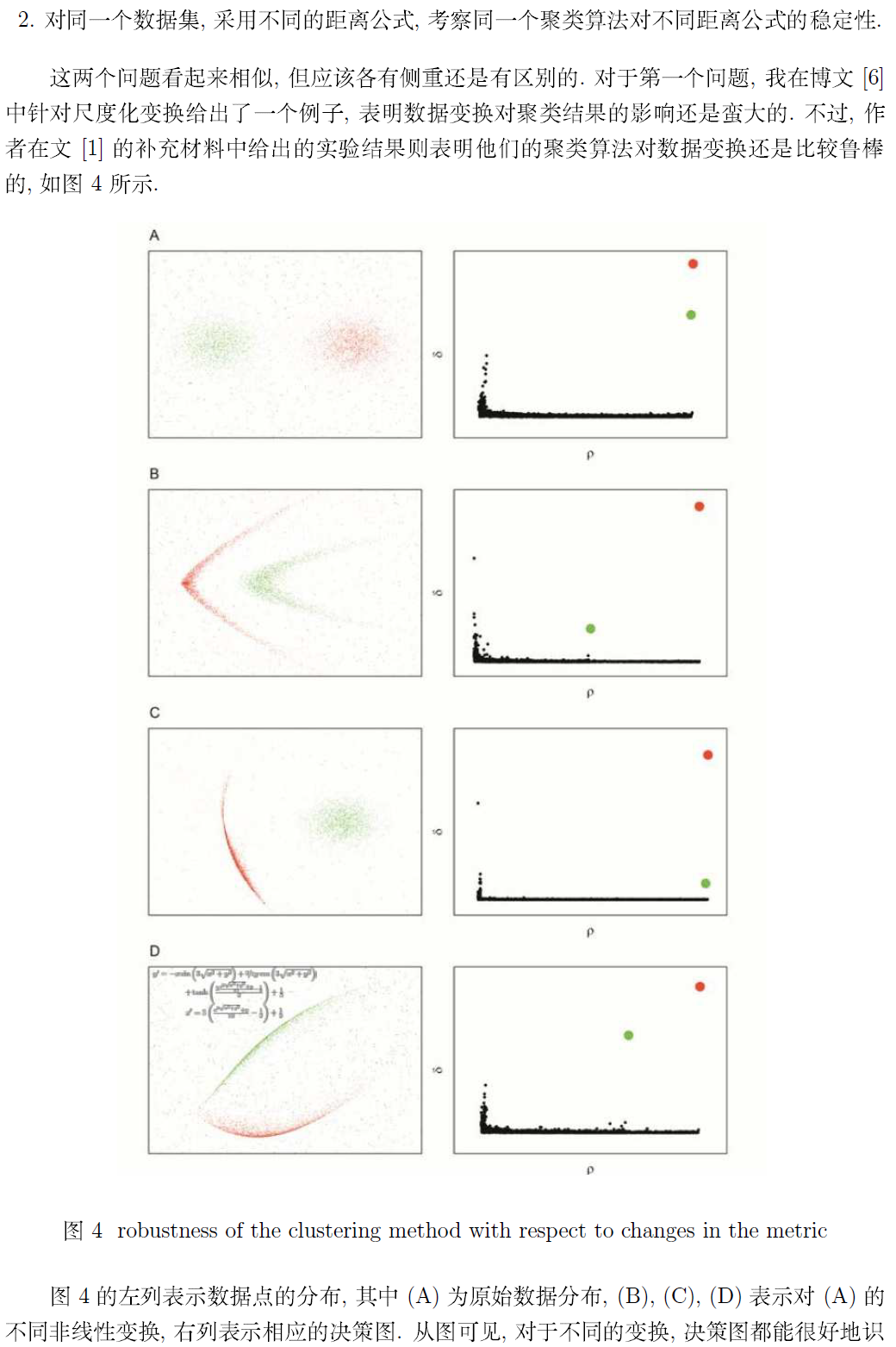
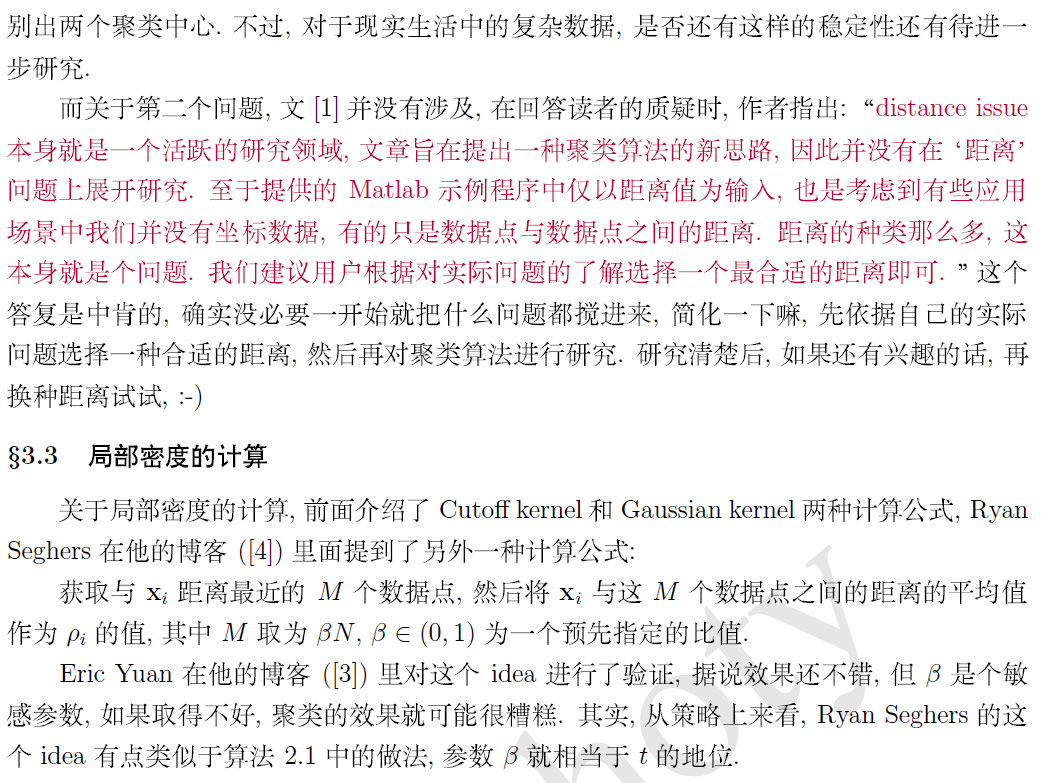
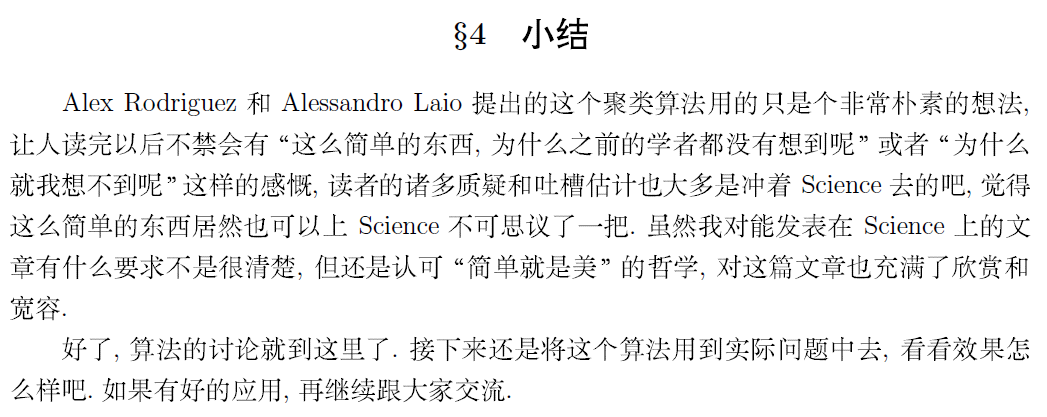
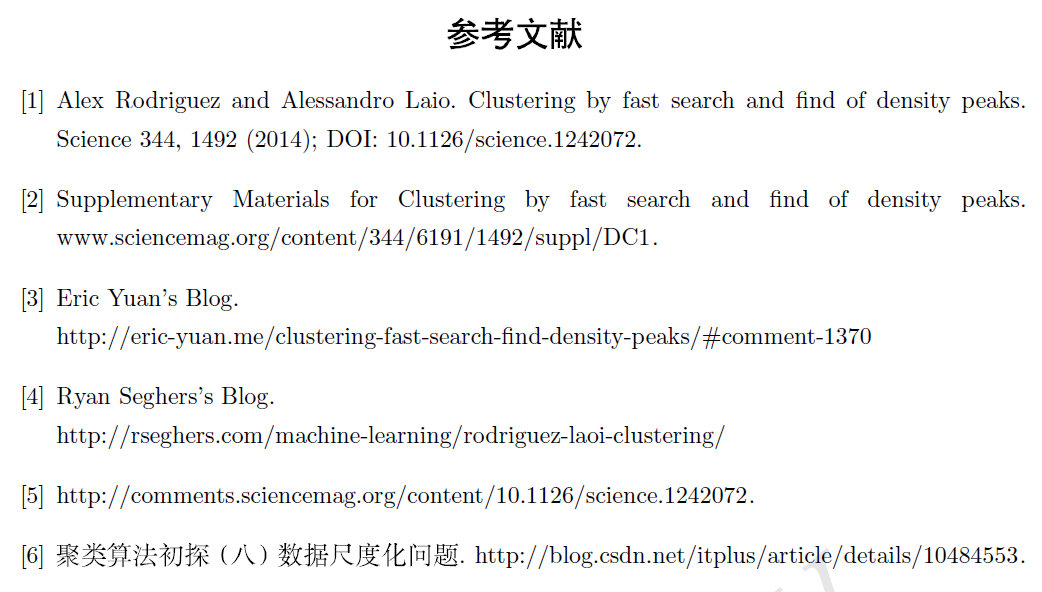














 9757
9757

 被折叠的 条评论
为什么被折叠?
被折叠的 条评论
为什么被折叠?








